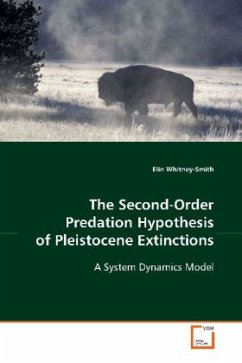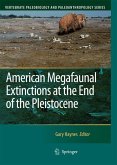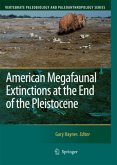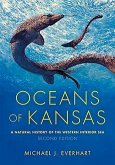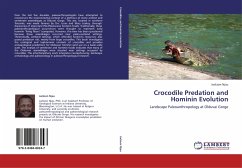The end of the last Ice Age (Pleistocene) saw: 1)
significant climate and vegetation changes, 2) the
introduction of humans to the New World, and 3) major
megafaunal extinctions.
The leading theories of these extinctions climate
change and overkill are inadequate neither explains
why: 1) ruminants survived better than non-ruminants;
2) many mammal species were diminished in size; or 3)
why vegetative environments shifted.
Climate change does not explain why climate changes
of similar magnitude did not lead to similar
extinctions.
Overkill links extinction with humans hunting
herbivores, but omits the reciprocal impact, of prey
decline on predators, yet standard predator/prey
models show predators cannot hunt prey to extinction.
The Second Order Predation theory handles these
concerns. It holds that humans reduced predator
populations, leading to a megaherbivore boom,
over-consumption of plants, environmental exhaustion,
and extinctions. The mathematical model developed to
test this hypothesis is the only one to date that can
be used to compare all three extinction theories.
significant climate and vegetation changes, 2) the
introduction of humans to the New World, and 3) major
megafaunal extinctions.
The leading theories of these extinctions climate
change and overkill are inadequate neither explains
why: 1) ruminants survived better than non-ruminants;
2) many mammal species were diminished in size; or 3)
why vegetative environments shifted.
Climate change does not explain why climate changes
of similar magnitude did not lead to similar
extinctions.
Overkill links extinction with humans hunting
herbivores, but omits the reciprocal impact, of prey
decline on predators, yet standard predator/prey
models show predators cannot hunt prey to extinction.
The Second Order Predation theory handles these
concerns. It holds that humans reduced predator
populations, leading to a megaherbivore boom,
over-consumption of plants, environmental exhaustion,
and extinctions. The mathematical model developed to
test this hypothesis is the only one to date that can
be used to compare all three extinction theories.

